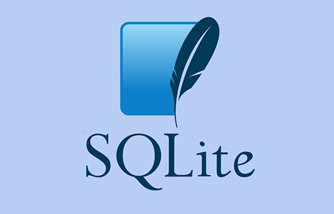
In this tutorial, we will show you how to install SQLite on Debian 10. SQLite is a powerful, lightweight, and self-contained database engine that is widely used in various applications, from mobile apps to web browsers. Its simplicity and efficiency make it a popular choice for developers who need a reliable database solution without the overhead of a full-fledged database management system. This article provides a comprehensive guide on how to install SQLite on Debian 10, ensuring you have all the necessary steps and tips to get started smoothly.
Understanding SQLite
SQLite is an embedded SQL database engine that provides a full-featured SQL implementation. Unlike traditional database systems, SQLite does not require a separate server process, which simplifies the installation and management process. Some key features of SQLite include:
- Self-contained: SQLite is a single library that can be included in applications without external dependencies.
- Cross-platform: It works on various platforms, including Windows, macOS, and Linux.
- Lightweight: The entire database is stored in a single file, making it easy to manage and deploy.
- ACID compliance: SQLite supports Atomicity, Consistency, Isolation, and Durability, ensuring reliable transactions.
SQLite is commonly used in applications where simplicity and speed are crucial. Examples include mobile apps (like iOS and Android), web browsers (such as Firefox), and even embedded systems.
Prerequisites for Installation
Before installing SQLite on Debian 10, ensure that your system meets the following prerequisites:
- System Requirements: A running instance of Debian 10 with internet access.
- User Permissions: You need either root access or a non-root user with sudo privileges to install software packages.
- Updated System: It’s essential to have your system updated to avoid compatibility issues with package installations.
Updating the System
The first step in the installation process is to update your Debian system. This ensures that you have the latest package lists and software updates. Follow these steps:
sudo apt update
sudo apt upgradeThe command sudo apt update refreshes the package list from the repositories configured on your system. The subsequent command, sudo apt upgrade, upgrades all installed packages to their latest versions. This step is crucial as it helps prevent potential issues during the installation of SQLite.
Installing SQLite
With your system updated, you can now proceed to install SQLite. The installation process is straightforward:
sudo apt install sqlite3This command will download and install the SQLite package along with any necessary dependencies. During the installation process, you may be prompted to confirm the installation by typing Y. Once completed, you can verify that SQLite has been installed correctly by checking its version:
sqlite3 --versionIf the installation was successful, this command will display the version number of SQLite installed on your system. For example, you might see output like 3.27.2 2019-02-18 14:05:58.
Basic Usage of SQLite
After installing SQLite, you can start using it through its command-line interface (CLI). To launch SQLite, simply type:
sqlite3This command opens the SQLite prompt where you can begin executing SQL commands. Here are some basic commands to get you started:
- Create a Database:
.open mydatabase.dbThis command creates a new database file named
mydatabase.db. - Create a Table:
CREATE TABLE users (id INTEGER PRIMARY KEY, name TEXT NOT NULL);This SQL statement creates a table named
users. - Insert Data:
INSERT INTO users (name) VALUES ('Alice');This command inserts a new record into the
userstable. - Select Data:
SELECT * FROM users;This retrieves all records from the
userstable.
You can exit the SQLite prompt by typing .exit.
Common Issues and Troubleshooting
If you encounter issues during or after the installation of SQLite on Debian 10, here are some common problems and their solutions:
- Error: Package not found:
– Ensure that your package list is updated by runningsudo apt update.
– Check if you have internet access or if your sources list is correctly configured. - Error: Permission denied:
– Make sure you are using sudo when installing packages.
– If you are logged in as a non-root user without sudo privileges, switch to a user with sufficient permissions. - Error: Command not recognized:
– Verify that SQLite was installed correctly by checking its version.
– If it’s not recognized, try reinstalling usingsudo apt install sqlite3. - No output when running commands:
– Ensure that you are in the correct database context or that your SQL syntax is correct.
Using GUI Tools with SQLite
If you prefer working with graphical user interfaces (GUIs) rather than command-line tools, several GUI applications can help manage SQLite databases more easily. Some popular options include:
- SQLiteStudio: A free and open-source tool that offers an intuitive interface for managing databases.
- DB Browser for SQLite: Another user-friendly option that allows for easy database creation and editing without needing SQL knowledge.
This section will provide brief installation instructions for DB Browser for SQLite as an example:
wget https://github.com/sqlitebrowser/sqlitebrowser/releases/download/3.12.0/DB.Browser.for.SQLite-3.12.0-linux-x86_64.AppImage
chmod +x DB.Browser.for.SQLite-3.12.0-linux-x86_64.AppImage
./DB.Browser.for.SQLite-3.12.0-linux-x86_64.AppImage
This set of commands downloads the AppImage file for DB Browser for SQLite, makes it executable, and runs it directly. You can then use this GUI tool to create databases and manage data visually.
Congratulations! You have successfully installed SQLite. Thanks for using this tutorial for installing SQLite on Debian 10 Buster. For additional help or useful information, we recommend you check the official SQLite website.